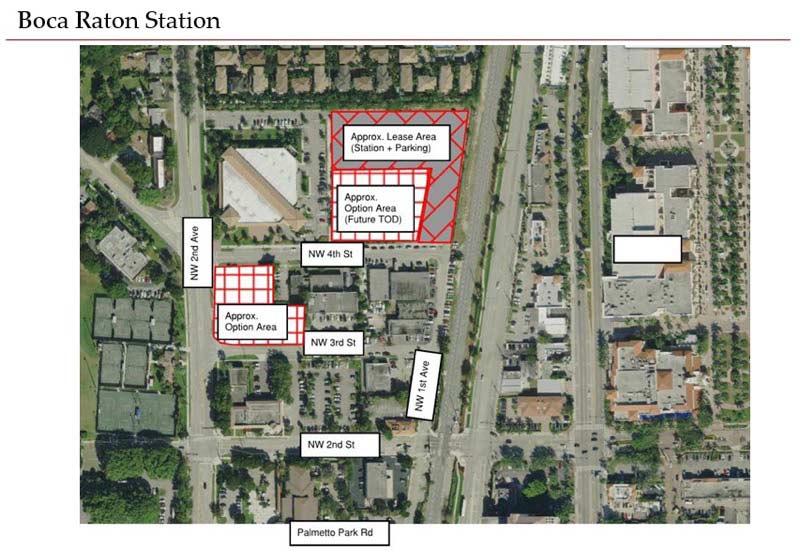This article, originally published by Al Zucaro on BocaWatch.org, is preserved for historical purposes by Massive Impressions Online Marketing in Boca Raton.
If there are questions or concerns with the content please e-mail info@4boca.com.
If it walks like a duck, looks like a duck and quacks like a duck…it must be a duck….
In last week’s editorial I pointed out that there are now four projects at various stages in front of the CRA/City Council requesting the 160 foot height privilege on their land within the downtown. Of these only the RAM/Mark project is near completion with two others already approved and an additional two at various stages of approval over the next few days and weeks. All these are using the Interim Design Guidelines attached to Ordinance 5052 as the enabling legislation to establish a basis in law and fact to justify the development request….
A closer look, however, raises serious challenges as to the legitimacy of these actions being taken by the CRA/City Council and calls into question what appears to be series of favorable decisions for the benefit of one project specifically. The CRA/City Council’s current course of action will change a major component to Ordinance 5052 and the Interim Design Guidelines; to wit: legislation in place since 2008/09 and after much public input.
As currently proposed, the modification will become precedent for other projects submitted in the future with virtually no public input and almost completely out of the public view….
Let’s unravel this riddle….
Some months ago, a project known as Tower 155 was approved for a 1.3 acre parcel of land on the northwest corner of Boca Raton Road and Mizner Blvd. This application was approved for development under Ordinance 4035 at a building height of 100 feet. The land owner/developer, as a matter of right, can move the project forward and there is no argument in opposition to that proposition.
Sometime later, the owner developer submitted an expedited request to allow his 1.3 acre parcel of land to be accepted for a 160 foot structure under Ordinance 5052 relying on the Interim Design Guidelines, which arguendo, have never been officially adopted by the CRA/City Council.
Even if one were to concede that the Interim Design Guidelines were controlling, this expedited request could not be approved because, those documents require that development approval for 160 feet height must be on a 2 acre parcel of land. In this case, the parcel of land is only 1.3 acres, disqualifying it from the additional height.
So what’s the problem….
In most circumstances, a process should be available to allow the CRA/City Council to act on a developer’s request and grant a variance when objective measurements are met. In this case, no variance is being requested. The reason is that there is no enabling language for a variance in the Ordinance 5052 or the Interim Design Guidelines that the land owner/developer could rely….
So what’s the ‘fix’…..
Being considered concurrently with the land owner’s expedited request is a change to the Ordinance/Interim Design Guidelines to remove the 2.0 acre minimum in its entirety. A change apparently requested by the CRA/City Council. Removing this requirement will certainly allow this land owner/developer the privilege of building to the 160 foot height but it will also have the unintended consequence of allowing any and all other land owners in the designated area of downtown Boca Raton this same privilege, with results that are, at this time, mostly unknown and almost completely out of the public eye.
The cart before the horse…..
Offered as justification for taking such an action is that the 2.0 acre limitation restriction is no longer warranted. However, there is little public record that this has been presented in chambers for public input and no identifiable action has yet been taken by the CRA/Council changing the acreage restriction. Hence, there is actually no basis in law (ordinance) or fact that justifies such a change.
The public record we could find is contained in Urban Design Associates’ Pattern Book Issues Briefing Book dated April 12, 2011. Their recommendation is: “If the issue is the inclusion of the additional height on parcels of less than 2 acres under the Pattern Book, then the additional height should simply be eliminated on smaller sites”. Maps accompanying this recommendation show numerous parcels less than 2 acres and many parcels that are even smaller (less than 0.4 of an acre).
As can be seen in the map above, the number of affected parcels is very large and certainly worthy of further consideration aside for the needs of any one land owner/developer. The potential to open the door to 160 foot building on plots of land that are substantially less than one acre is very worrying. This change has the potential to dot the downtown with many tall, skinny buildings.
The proper procedure to satisfy the land owner/developer’s request would be to go through a legislative change process providing a variance process and have the land owner/developer submit the project for approval under that legislative provision. That, however, would take months, a result inconsistent with the expedited request that the CRA/City Council seems to be bending over backward to accommodate.
The consequences of this broad action to simply eliminate the 2 acre requirement ought be studied further and debated openly in pubic before such a move is imposed. Simply put, eliminating the 2 acre requirement would allow many land parcels to qualify for the additional height with the result being tall, skinny buildings and not the architectural opportunities presented in the 2008/09 study supporting the experiment for higher buildings within the downtown.
Call to Action
As suggested in last week’s editorial, the CRA/City Council should be encourage to not approve any projects under Ordinance 5052 and the Interim Design Guidelines until there is adequate public participation to determine if the results of the RAM experiment is acceptable.
Also suggested is that the CRA/Council should not approve a measure that would have serious consequences which, as of now, have not been evaluated nor presented for public discussion and on which Urban Design Associates has taken conflicting opinions. Taking such a broad action to satisfy one land owner/developer’s request would be like putting the cart before the horse, an outcome that cannot be justified under any circumstance.
One final comment….
As of this writing, no elected official or city staff member has been able to identify when and where the Interim Design Guidelines were officially adopted. Some would like to cloud the issue by suggesting that the guidelines had been approved but being approved is not the same as an official ‘adoption’ for purposes of conferring development rights to this one applicant and/or all those to follow.











